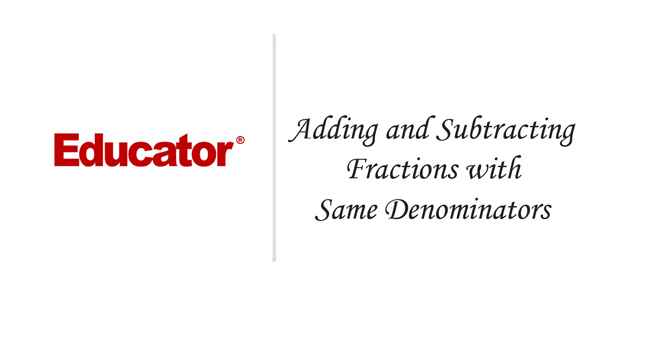Starting up...

This is a quick preview of the lesson. For full access, please Log In or Sign up.
For more information, please see full course syllabus of Basic Math
For more information, please see full course syllabus of Basic Math
Basic Math Adding and Subtracting Fractions with Same Denominators
Lecture Description
In this lesson our instructor talks about adding and subtracting fraction with same denominator. First she explains what is a numerator and a denominator. Then she dives into an example. Four extra example videos round up this lesson.
Bookmark & Share
Embed
Share this knowledge with your friends!
Copy & Paste this embed code into your website’s HTML
Please ensure that your website editor is in text mode when you paste the code.(In Wordpress, the mode button is on the top right corner.)
×
Since this lesson is not free, only the preview will appear on your website.
- - Allow users to view the embedded video in full-size.
Next Lecture
Previous Lecture










































 Answer Engine
Answer Engine



1 answer
Last reply by: Kyan Wang
Mon Jun 19, 2023 4:07 PM
Post by Zoe Chen on April 24, 2020
why is this easy???????????????????????????????
0 answers
Post by Jay Chen on March 15, 2020
Thank U
0 answers
Post by Amanda Rimeikis on February 15, 2017
Great teachings! I was hoping on the last extra example 4: you would explain the other strategy that you mentioned, rather than the LCM OR LCD, with 23/95 + 4/5... when you said you can divide 95 by 5, since its a multiple... so what do you do in that case?
0 answers
Post by Ana Chu on February 4, 2014
Thank you, really good!